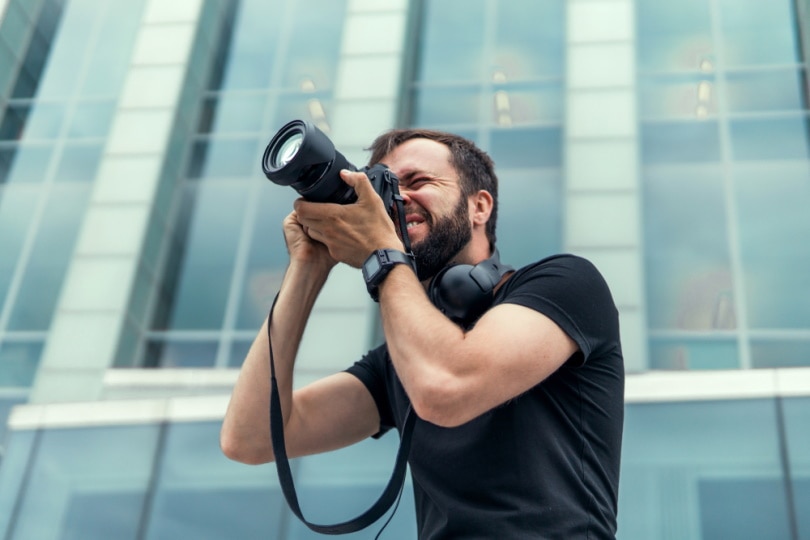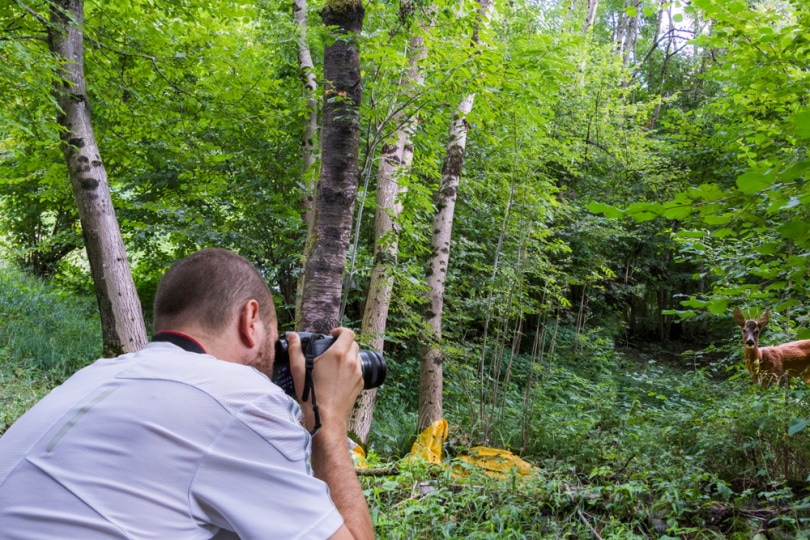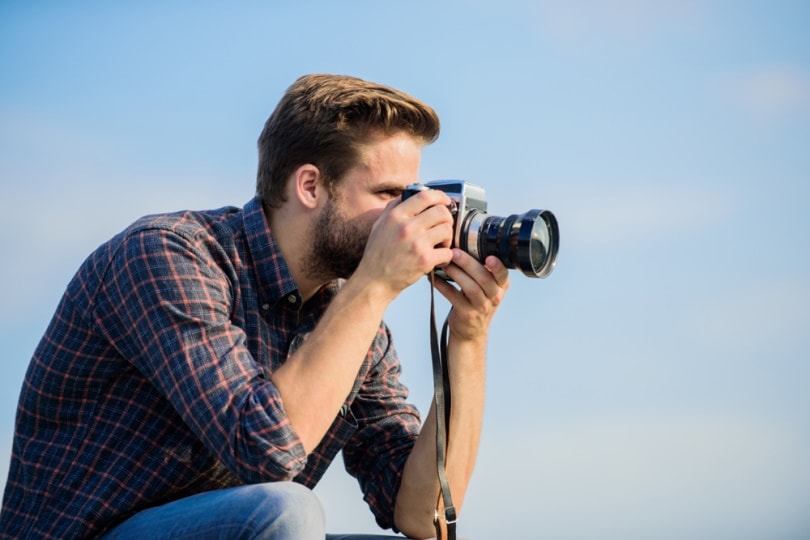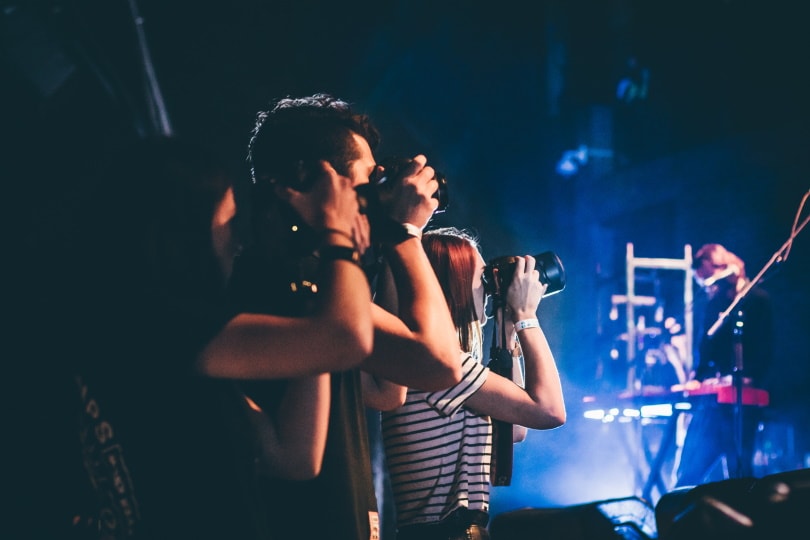What Is a Fast Shutter Speed? (When to Use It)
Last Updated on

In photography, camera sensors or film are exposed to light in order to capture a subject. The image captured reaches the camera lens, going past it to the film to capture it in real time. This is where the shutter comes in. The shutter will close on the snap, which stops the flow of light to the subject matter and exposure of the film.
The length of time that the center of the film is exposed to the subject (and the light) will determine the shutter speed setting. A fast shutter speed might be 1/500-1/1000 seconds or 1/700-1/2000 seconds, and it’s typically used to capture sharp images of fast movements. So, in definition, photographers alter the shutter speed of a camera in order to control how much light the sensor and film receive — and ultimately, the appearance of the subject.
But how does this affect the appearance of an image? What’s the difference between a fast shutter speed and a slower one? In this article, we’ll answer these questions for you.

How Does a Fast Shutter Speed Work?
Setting a faster shutter speed lets less light into the camera sensor or lens, which is a setting ideal for fast-moving subjects, such as flying birds, moving vehicles, or someone running. If you were to take pictures of these subjects while in motion using a slow shutter speed, the images would be blurry because the camera’s film would be exposed too long.
Think of fast shutter speeds as a way to stop or freeze the action and slower shutter speeds as a way to create motion blur. Slow shutter speeds are ideal in low-light or nighttime conditions, especially when you want to create an exaggerated blurred image or other visual effects.
However, if you want to create a sharp image of a subject, a faster shutter speed is ideal. And in some cases, panning that camera to the side can help to make up for slower shutter speeds such as taping a biking marathon.

What Are the Different Types of Shutters?
There are different types of camera shutters that can provide different advantages and photos. However, the type of shutter you have will depend on whether you have a digital or analog camera and if the quality of the camera, as more expensive cameras, will have more shutter speeds.
- Rotary Disc Shutter: This type of shutter is mechanical and common on old-school cameras. It’s operated by an opening disc that is set at 180 degrees and can be adjusted up to 360° or down to zero. As the disk rotates it opens to allow light to hit the film.
- Focal Plane Shutter: These types of cameras have two shutters: one exposes the film to light while another slit curtain opens and closes directly across the camera and in front of it. Essentially, it has two different shutters, one that closes across the width of the focal plane and one that closes across the top and bottom.
- Leaf Shutter: The leaf shutter is a type of mechanical shutter that gets its name from its shape, which resembles that of a five-point leaf. It’s probably the most recognizable camera shutter. When the shutter opens, it expands sort of the way that the iris of an eye does. And when the shutter closes, it detracts, blocking any light from reaching the film. The overlapping blades in the shutter allow it to open and close to expose the film.
- Rolling Shutter: A rolling shutter is great for adding a cinematic feel in a more dynamic (and wider) range to images. These shutters contain pixels that are turned sequentially (such as from the top to the bottom). The biggest concern with rolling shutters is their chance to cause image distortion since they record light in a sequential mechanism. Though the amount of light recorded is equal, each pixel will capture a different moment which can cause a bit of distortion.
- Global Shutter: In a camera with a global shutter, each pixel will be turned simultaneously (aka “snapshot” mode). This is advantageous when you’re looking to remove distortions created by rolling shutters. The only downside is that the shutters typically have less range and may not be suitable for low-light visuals. Most digital cameras will have a digital and a mechanical shutter which allows for less power usage. This combo is great for catching fast-moving events and enabling freeze frames.

Where Is a Fast Shutter Speed Best Used?
Fast shutter speeds are optimal settings in brightly lit areas. In these scenarios, you’ll need the shutter to open only for a very short amount of time in order to have adequate subject lighting. Because the area is already brightly lit, you don’t want to overexpose the film or the sensor.
Also, any time you want to capture fast or split-second movements, such as a hummingbird hovering or a sprinter running, you’ll want to use a high shutter speed.
So, using a shutter speed of 1/1000 will work to sort of freeze the subject in motion. If you’re filming outside, you can typically use a higher shutter setting, as you usually have less light to work with. Be sure to account for this.
Advantages of a Fast Shutter Speed
Photographers who shoot sporting events, animals, nature, or other photography where freeze-frame and still shots are needed will often find faster shutter speeds to be more advantageous. Fast-paced motion is captured better with a faster shutter speed.
For example, a shutter speed of 1/60th would be way too slow to capture crisp images of a bird in flight. Keep in mind that whenever you increase the shutter speed, you’re also increasing the aperture of the lens (aka “iris”) as well.
So, if you want a creative shot, you can use a very shallow depth of field to make the background a blur, bringing the focus to the foreground. This is often used in interviews and other shots where the background can be a bit of a distraction.

Disadvantages of a Fast Shutter Speed
It’s also important to note that a sharper image can also come at a higher price. For example, if you’re shooting an “in-action” shot at a shutter speed that is too fast, it will make the image look darker, as it will decrease the amount of light that’s needed for a crisp image.
Ultimately, the camera’s iris needs to be opened long enough to maintain adequate exposure to the subject. In other words, don’t aim for shutter speeds that are too high unless you specifically plan to do a bit of editing in post-production. You need to edit the freeze frames (or slow-motion stills).
Another disadvantage to faster shutter speeds is that it only works when there is enough lighting, which may not be possible if you’re filming outdoors at night or indoors with low lighting.
Try different settings to see what works best. Doing so will help you unlock tremendous potential in terms of framing, capturing crisp images, and creative possibilities while you’re working with different targets. It’s also helpful to experiment with different types of targets during both daylight hours and night or in low-light settings.
A Quick Reference Guide for Shutter Speed
| Someone walking at a moderate pace | 1/125-1/150 seconds |
| A person sprinting | 1/500-1/1000 seconds |
| A bird while in flight | 1/700-1/2000 seconds |
| Moving cars | 1/400-1/8000 seconds |
| An animal running | 1/500-1/2000 seconds |
| Freezing slow-moving animals | 1/250 second |
| Moving water (blurred) | 1/2 second |
| Still subject snapshots | 1/125 second |
| Sporting events | 1/500: 1/1000 second |
| Used to blur people walking or water | 1/20 seconds |

Conclusion
Shutter speed is the amount of time that a digital sensor or strip of film inside your camera is exposed to light while you’re taking a picture. The faster the shutter speed, the less light is allowed in the camera, which often results in a crisper image.
Fast shutter speeds are used to capture fast-moving actions such as people running, vehicles in motion or nature-related images, such as rain falling or birds flying. If you’re new to photography it’s important to have a good grasp of shutter speed, how it works, and when to use certain settings in order to create the perfect image.
Featured Image Credit: sergey causelove, Shutterstock
About the Author Robert Sparks
Robert’s obsession with all things optical started early in life, when his optician father would bring home prototypes for Robert to play with. Nowadays, Robert is dedicated to helping others find the right optics for their needs. His hobbies include astronomy, astrophysics, and model building. Originally from Newark, NJ, he resides in Santa Fe, New Mexico, where the nighttime skies are filled with glittering stars.
Related Articles:
What Is the Best Binocular Magnification for Hunting? Optical Features Explained
How to Clean a Refractor Telescope: Step-by-Step Guide
How to Clean a Telescope Eyepiece: Step-by-Step Guide
How to Clean a Rifle Scope: 8 Expert Tips
Monocular vs Telescope: Differences Explained (With Pictures)
What Is a Monocular Used For? 8 Common Functions
How to Clean a Telescope Mirror: 8 Expert Tips
Brightfield vs Phase Contrast Microscopy: The Differences Explained
